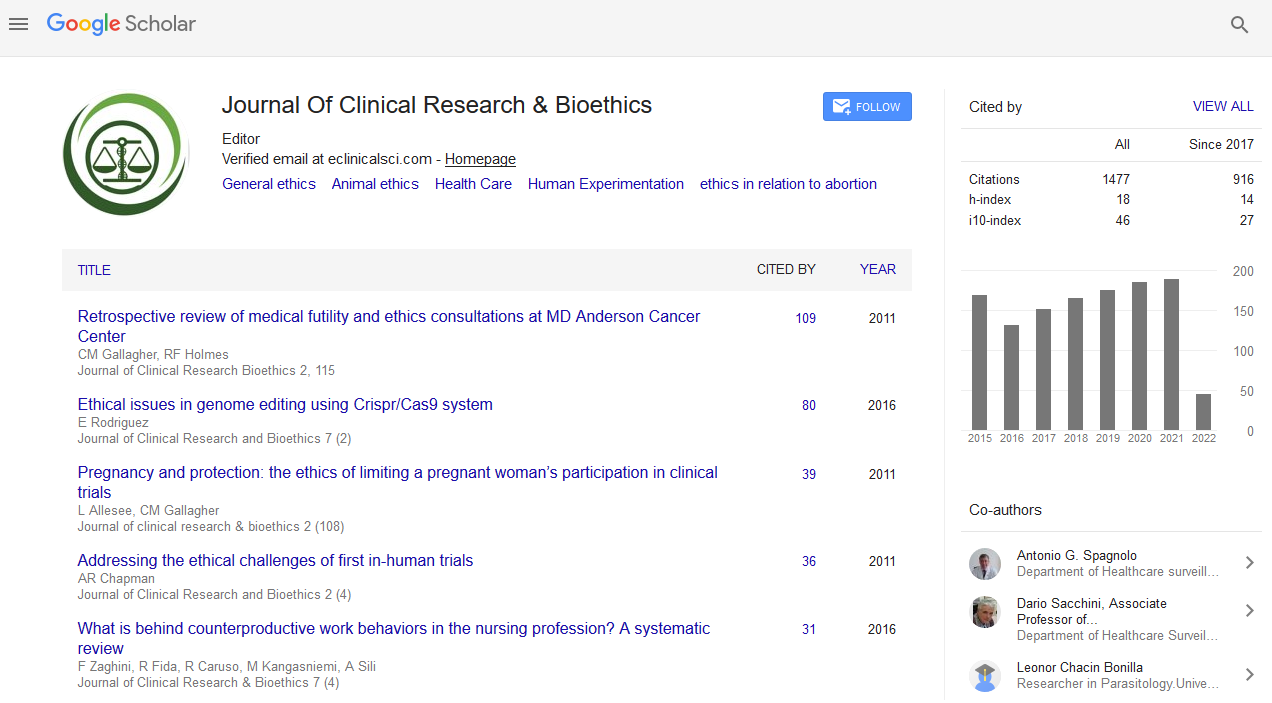PMC/PubMed Indexed Articles
Indexed In
- Open J Gate
- Genamics JournalSeek
- JournalTOCs
- RefSeek
- Hamdard University
- EBSCO A-Z
- OCLC- WorldCat
- Publons
- Geneva Foundation for Medical Education and Research
- Google Scholar
Useful Links
Share This Page
Journal Flyer

Open Access Journals
- Agri and Aquaculture
- Biochemistry
- Bioinformatics & Systems Biology
- Business & Management
- Chemistry
- Clinical Sciences
- Engineering
- Food & Nutrition
- General Science
- Genetics & Molecular Biology
- Immunology & Microbiology
- Medical Sciences
- Neuroscience & Psychology
- Nursing & Health Care
- Pharmaceutical Sciences
Abstract
The Challenge of Distributing Regulatory Responsibilities for Unknown Risks: ‘Nano’-Cosmetics and the EU Cosmetics Regulation as a Case Study
Clare Shelley-Egan and Diana Megan Bowman
The adoption of the European Union’s (EU) Cosmetics Regulation–which came into effect as of July 2013–is significant because it was the first piece of legislation at the national or supranational level to include provisions relating specifically to the use of nanomaterials in any products. While the regulation does not change the fundamental aspects of the regulatory regime, which includes putting full responsibility for ensuring the safety of the cosmetic product on the manufacturer/importer, the provision of consumer labelling of nanomaterials suggests a shifting of responsibilities that is new for cosmetics within the EU market. Although this additional shifting of responsibilities is subtle, we argue that it is nonetheless problematic, given current uncertainties about what a ‘nano label’ actually means, in addition to doubts around the capacity to furnish the consumer with sufficient information to enable them to make a fully informed consumer choice. The aim of this article is to understand the challenge of distributing regulatory responsibilities for unknown or unquantified risks through the lens of the Cosmetics Regulation. We present and discuss data gathered in interviews with a small number of cosmetics stakeholders including industry, representatives of government/regulatory agencies, NGOs/civil society and experts (in industry and dialogue)-as a means of illustrating various elements viewed by stakeholders as necessary to be able to take up responsibilities and identifying the constraining factors to doing so, i.e. regulatory challenges. The overarching aim of the article is to understand the implications of the distribution of responsibilities, as set out by the regulation, for enabling consumers to meaningfully differentiate between conventional cosmetic products and those containing nanomaterials.


